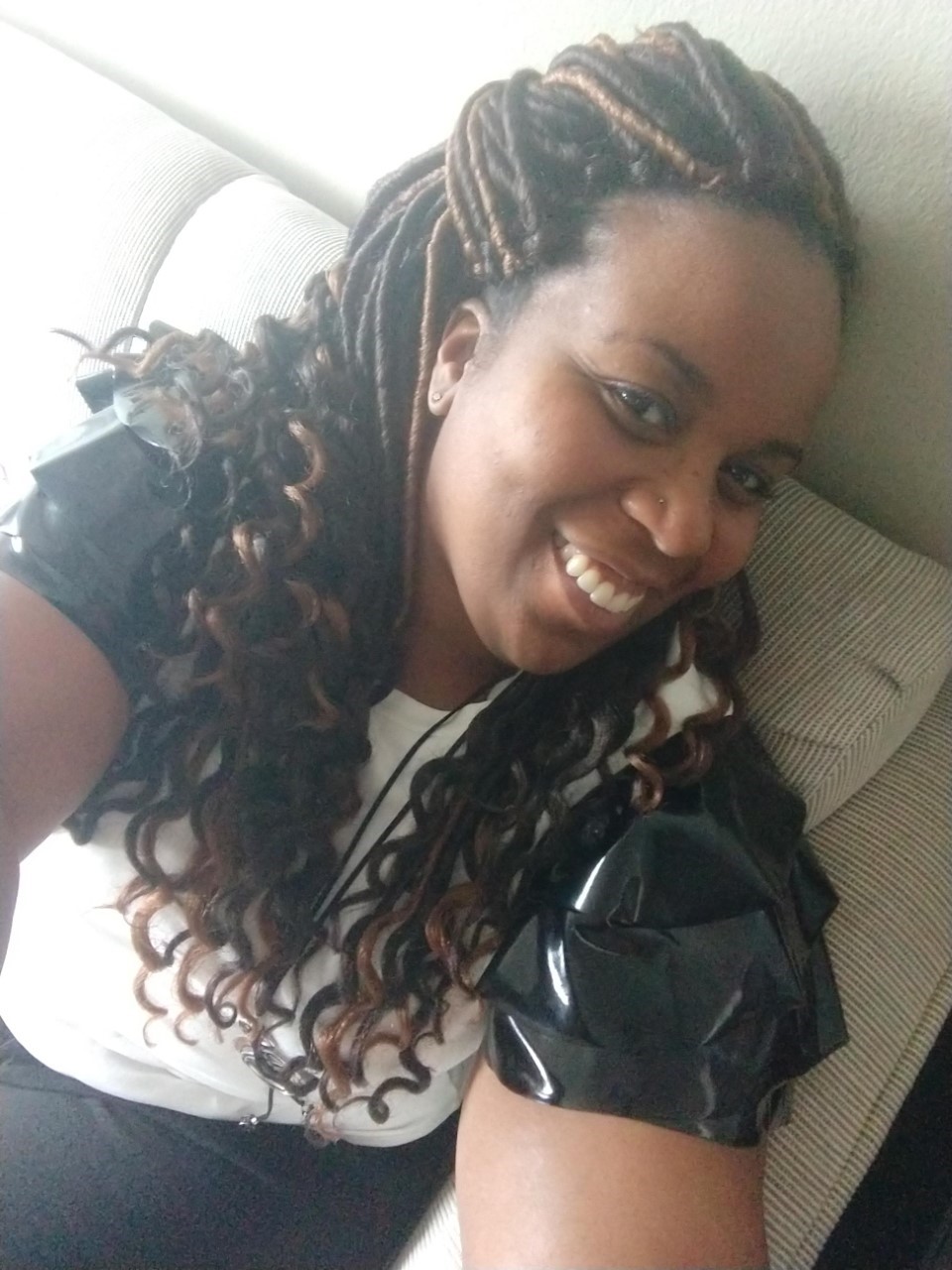Salmon is one of my favorite fish options whenever I go out to dinner. Normally, I am quite satisfied with my selection, and I am often left wanting more but when I went out to eat a couple of weeks ago, I ended up sending my salmon back because it was dry and not very flavorful. I left the restaurant thinking I could have done better at home – so that’s what I decided to do. I thought about the flavor dynamics that I like and created my own marinade and also made a popular one here at The Chopping Block.
A marinade is a seasoned liquid used to soak food in (mostly meat, fish and vegetables) and add flavor. In some cases, a marinade is used to tenderize meat. The two main ingredients of any marinade are acid (lemon juice, vinegar or wine) and spices. To maximize the flavor potential of the marinade, use a glass, ceramic or stainless-steel container. Avoid plastic because it absorbs flavors and anything aluminum may result in a slight metallic taste. Lately, my palette has been excited by the spicy/hot and sweet/savory combination. So I let my taste buds lead me in the direction of the perfect marinades for my salmon.
Did you know that there are six types of salmon harvested in North America? Atlantic Salmon, Chinook Salmon, Chum Salmon, Coho Salmon, Pink Salmon and Sockeye Salmon; of the six, the three most common in North America are Atlantic, Pink and Sockeye. Atlantic and Sockeye are often sold in the grocery store and Pink salmon is most commonly found in the canned fish isle of the grocery store and is great for making salmon croquette (at least in my family). I have found that even though Atlantic, Pink and Sockeye are all in the same family, each has a very different and distinct texture and flavor.
- Atlantic Salmon: A milder flavor than wild salmon. The flesh ranges from pink to orange depending upon the amount of pigment added to their feed. The flesh has a medium-firm texture with large flakes and a medium fat content.
- Pink Salmon: flesh is a light pink color. The texture is moderate to tender. The fish can be dry, and the flavor is quite mild for salmon. Most pink salmon is canned or sold whole frozen, as the fillets are very small, and not attractive in a fresh fish case.
- Sockeye: It has a firm texture with medium sized flakes and flesh which ranges in color from orange to deep red. Compared to Chinook (King) Salmon, Sockeye has a denser, meatier texture and a more intense flavor, while King has a more succulent, tender texture with larger flake.
If I am going to cook salmon immediately, I buy it fresh from the seafood counter at my grocery store. This allows to me to see the fish and also smell the fish. Fresh salmon should smell fresh and not fishy. If you are particular about purchasing your seafood and live in the Chicagoland area there is an opportunity to purchase your seafood through the vendor that we use here at TCB, Hooked on Fish. If Hooked on Fish is not an option, then your local grocer will do.
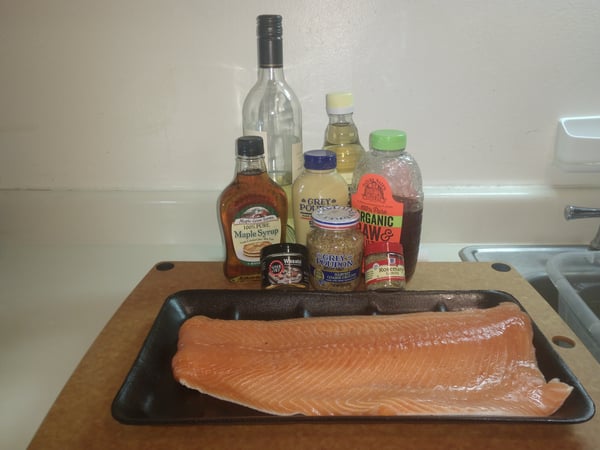
For my marinades, I landed on Maple and Mustard and Wasabi Honey. I selected the Atlantic salmon filet since it is milder in flavor and I really want to capture the flavor of the marinades.
Maple and Mustard Marinade
- 3 tablespoons whole-grain mustard
- 3 tablespoons Dijon mustard
- 2 teaspoons rosemary, rough chopped
- 2 tablespoons maple syrup
- 1 tablespoon white wine
- Salt and pepper to taste
Wasabi Honey Marinade
- 1 teaspoon wasabi powder
- 1 teaspoon honey
- 2 Tablespoons rice wine vinegar
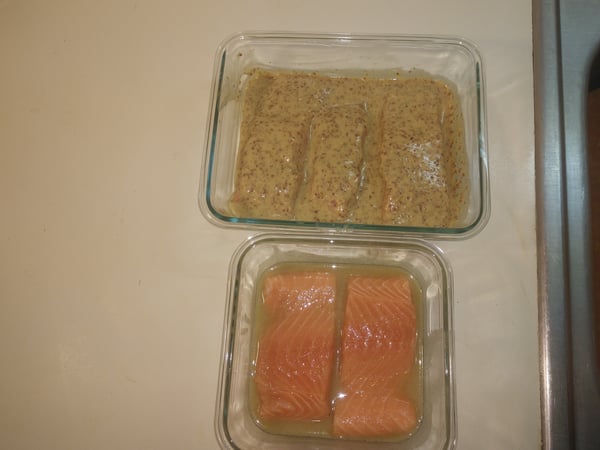
I let the fish marinate for 15 -20 minutes before placing on a sheet tray and baking on 400 degrees for 20-25 minutes or until the salmon has a deep pink color and no longer looks translucent. I let the fish rest for 10 minutes before serving.
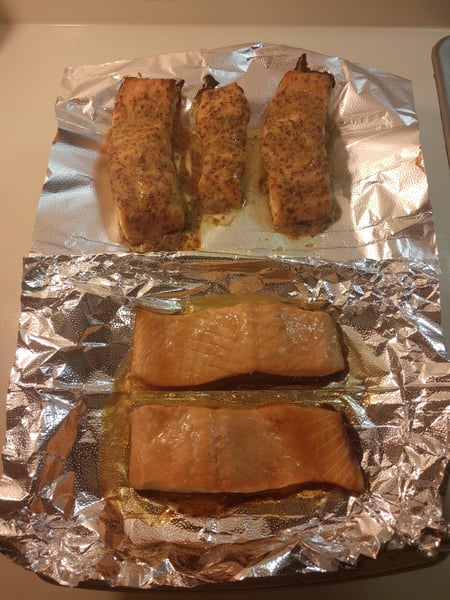
In the end, I was very pleased with the result of my marinades and how they married with the salmon. The marinades weren’t overly complicated in flavor or preparation.
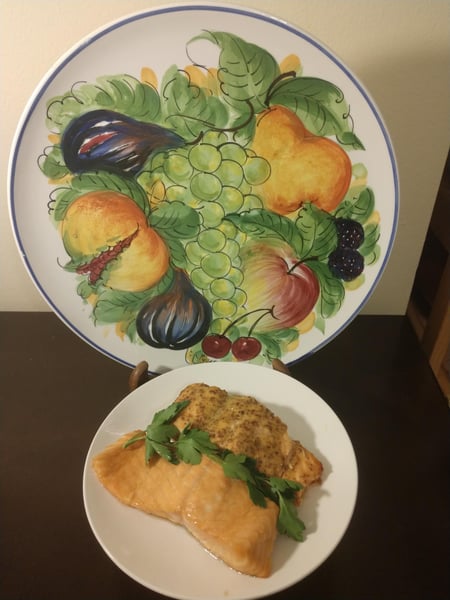
If your interest has been peaked, and you are thinking about how you can build your own marinade, here are a few things to consider:
- Start with your own flavor profile – what are your favorite flavors?
- Marinades consist of 2 ingredients – an acid and herb(s) or spices.
- Perhaps the most helpful tip – Come visit us for any of these upcoming classes that are sure to help you add to your flavor profile and become proficient at cooking seafood.


